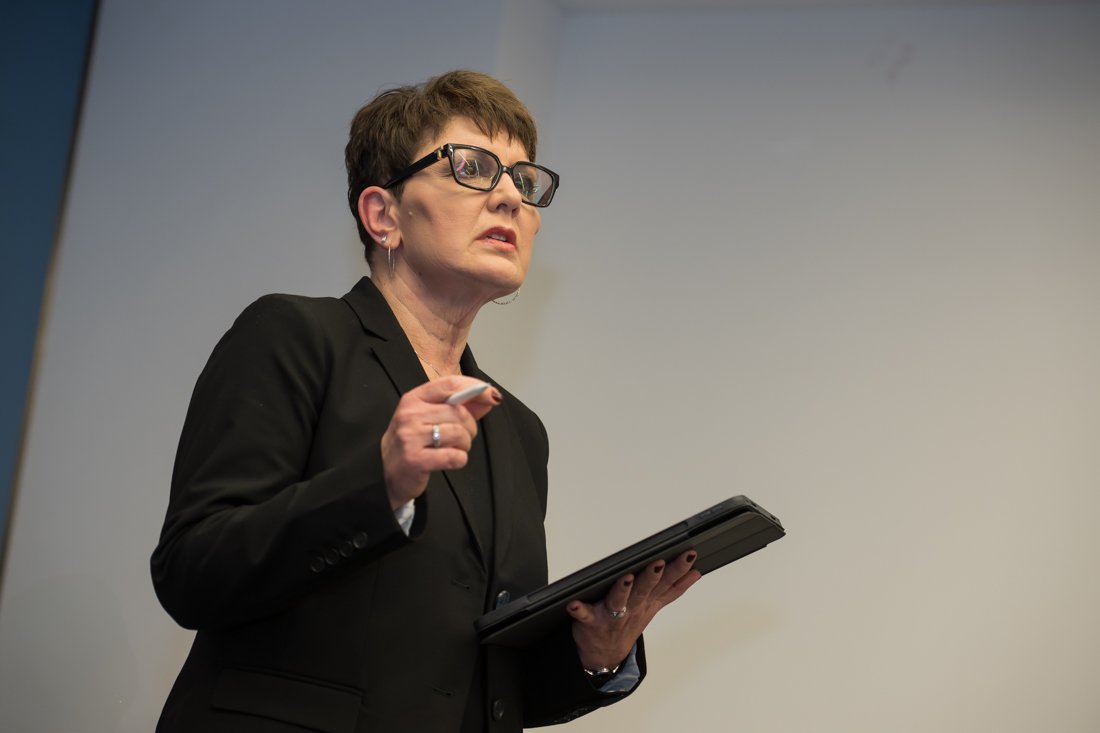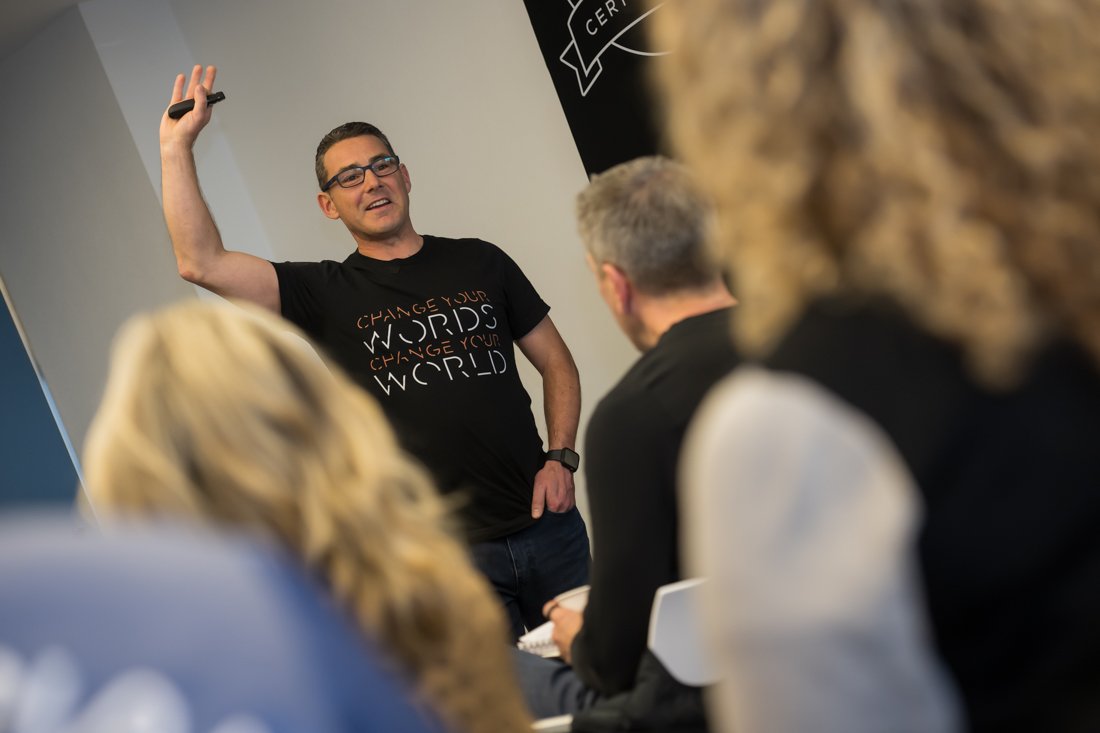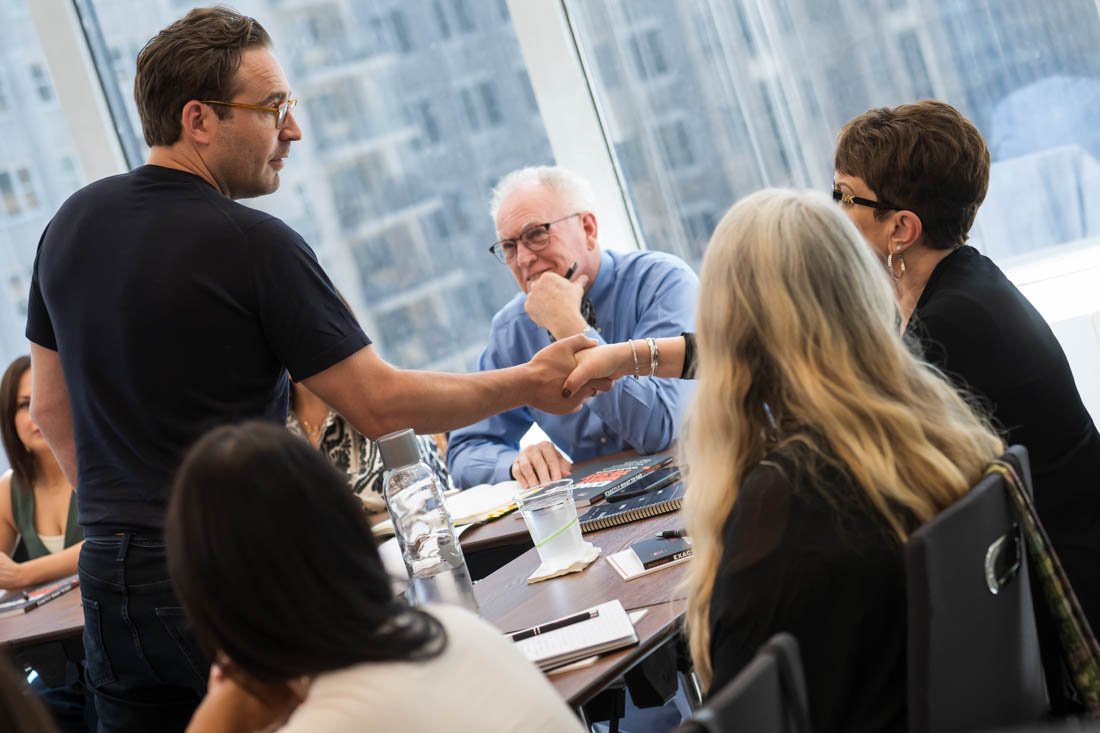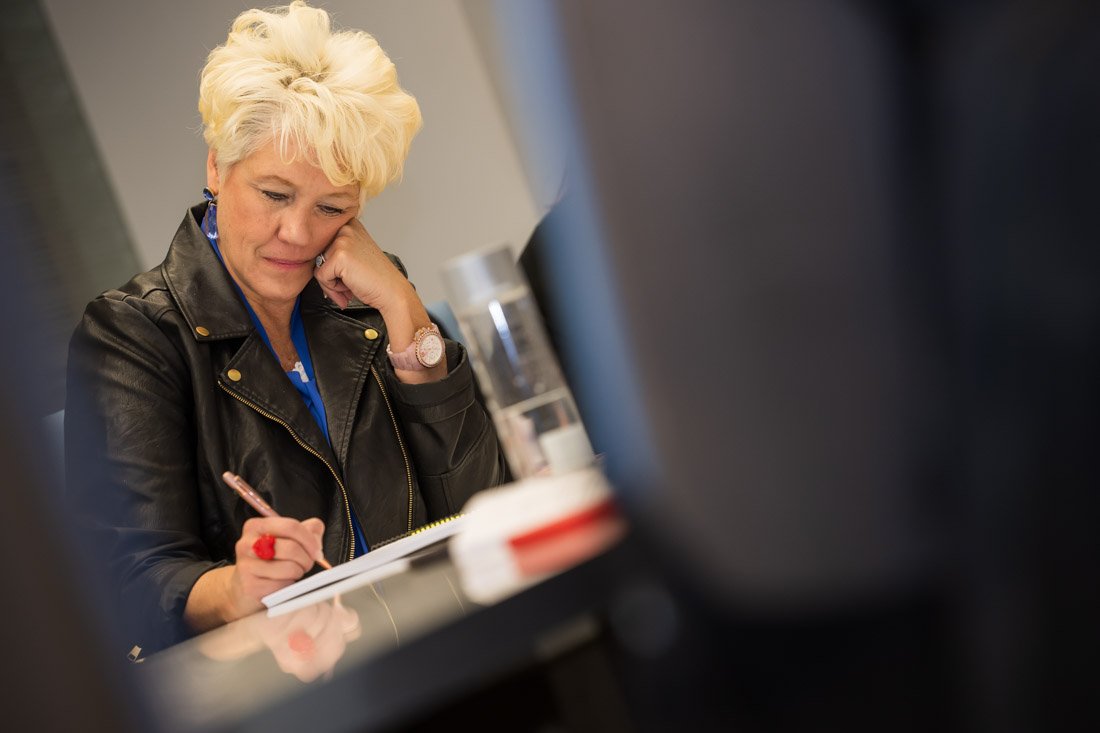Workshops have the power to transform thinking, inspire action, and drive meaningful results, but only if they’re designed with intention. Whether you’re running a session in person or virtually, success depends on thoughtful planning, engaging delivery, and clear outcomes.
As the Head of Learning & Development for Exactly What to Say, I play a pivotal role in equipping professionals with the tools and techniques to communicate more effectively. I work closely with Certified Guides, providing training, coaching, and accountability to help them deliver impactful workshops and events.. Beyond supporting our Guides, I am deeply committed to helping individuals and organizations craft workshops that create lasting impact. Whether you’re fine-tuning a session or designing something from scratch, this framework will help you create a workshop that is both engaging and results-driven.
Why Accountability Works
1. Workshop Title: Make It Relevant and Compelling
Your workshop title is your first chance to capture attention and communicate the value of your session. Think about the specific challenges your audience faces and package your event around a clear, relevant promise.
Some examples:
- “Learn How to Defend Your Value Proposition in a Highly Competitive Market”
- “Overcome the Most Common Objections in [Industry/Field]”
2. Engage the Audience from the Start
Right from the beginning, set the tone with a thought-provoking rhetorical question or statement. This immediately gets participants thinking and emotionally engages.
For example:
- “What’s one challenge you face when trying to reach your goals?”
- “What would change if you could communicate your value with absolute confidence?”
This technique builds curiosity, makes the session interactive from the start, and naturally leads into the workshop content.
3. Objectives & Outcomes: Define Success Clearly
A well-structured workshop begins with clear objectives (what participants will learn) and outcomes (what they will be able to do with that knowledge).
For example:
- Objectives: Participants will learn how to structure their message to maximize influence.
- Outcomes: Participants will be able to confidently handle objections and turn hesitation into agreement.
Setting these expectations upfront helps participants stay focused and ensures they leave with practical takeaways.
4. Set the Scene: Establish Relevance & Credibility
Once the groundwork is laid, take a moment to acknowledge the challenge your audience is facing. Whether you’re presenting on sales conversations, leadership influence, or personal development, this is where you:
Show understanding of the problem
Share relevant personal experiences
Establish credibility
I often remind our Certified Guides that stories are a powerful way to make content relatable and memorable. Your audience should feel like you “get them” before you offer solutions.
5. The Solutions: Learning by Doing
Each solution you present should include an interactive element—not just passive listening.
Consider:
- Roleplay exercises – Let participants test real-world scenarios
- Group discussions – Encourage shared insights and diverse perspectives
- Quizzes or worksheets – Reinforce learning in a structured way
- Debates or case studies – Challenge participants to think critically
I encourage you to engage the audience in conversation rather than just presenting information. Make it experiential, people learn best by doing.
After presenting each solution, allow time for reflection, feedback, and Q&A.
6. Solution Summary: Reinforce the Key Takeaways
At this stage, recap the key solutions in a clear and concise manner. This solidifies learning and provides participants with a mental checklist of actionable insights.
What are the most important ideas they should remember?
How do these solutions address the initial challenge?
The goal is to make sure your audience retains and applies what they’ve learned.
7. Progress Check: Reconnect to the Objectives
Take a moment to reflect on the journey so far and connect it back to the objectives set at the beginning. This serves as a progress marker and ensures participants see how much they’ve gained from the session.
This is a powerful way to show transformation in a short time.
8. Reflection & Action Plan: Turn Learning into Results
Before closing, encourage participants to commit to action. Ask them:
- What are your 3 biggest takeaways from today?
- What’s the ONE BIG action you’ll implement immediately?
This step is crucial. Without action, even the best insights remain just ideas.
9. Open Q&A: Address Remaining Concerns
Create space for final questions, allowing participants to clarify doubts or seek deeper understanding. This is also an opportunity to further tailor your responses to their unique challenges.
This is a great moment to offer additional coaching and deepen engagement.
10. Next Steps: Keep the Momentum Going
Before wrapping up, provide clear next steps for participants.
- Where can they continue learning?
- What support is available if they have more questions?
- How can they stay connected with you?
This is a great time to remind participants about additional resources, upcoming events, or ways to continue applying learnt techniques in their daily lives.
Your Impact as a Facilitator
A well-designed workshop isn’t just about delivering content, it’s about creating a space for transformation.
The real power of a workshop lies in how well it engages, empowers, and equips participants to take meaningful action. As a facilitator whether you’re a Certified Guide or a professional trainer, you have the opportunity to change the way people think, communicate, and take action.
If you need additional support in structuring your workshop, refining your approach, or maximizing participant engagement, I’m here to help. Let’s make every workshop intentional, impactful, and results-driven.







